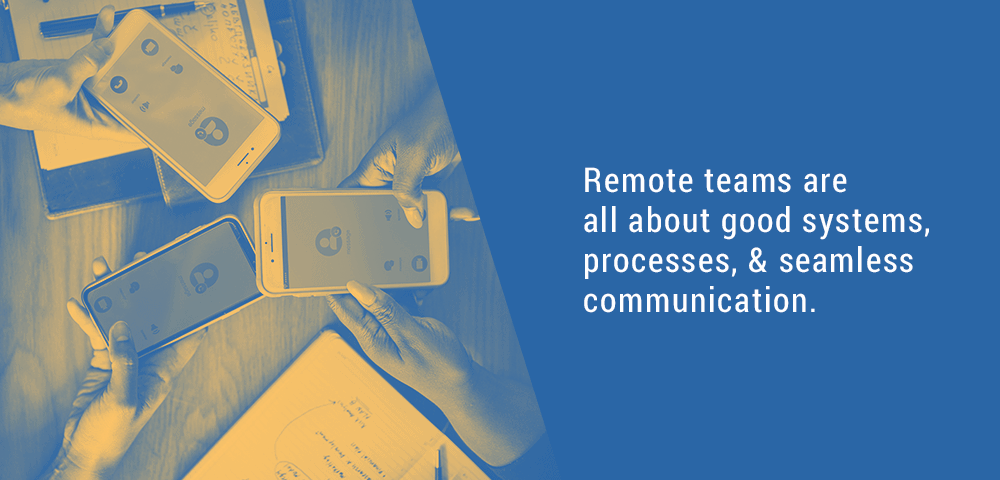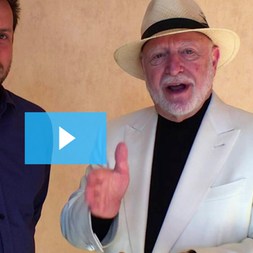
System Architect | Adam Houlahan: webtrafficthatworks.com
So you’re scouring the Internet for a potential addition to your team and you chance upon this total box checker: they fit the company culture you’re building, they have the skill set you need to grow, and they are beyond excited about your mission and values. Sounds perfect, yeah? But there’s a catch: they live across the globe a.k.a. Nowhere Near You. So what do you do?
- Ask them to make the big move.
- Move on and get back to searching.
- Offer the option to work remotely.
If it were 2003, many companies would undoubtedly go with a and b. But it’s fifteen years later, and the work landscape has changed in so many ways. For one, professionals across various fields can telecommute and work with colleagues from different stretches of the world. Employers now have a much larger pool of top-notch talent to draw from, and they do it—all while avoiding the complexities and costs of keeping an entire team on-site. More and more are tasting the sweet fruits of this change, that experts actually predict the future of work is remote.
Great remote companies build great culture.
What is so interesting about remote work is not that many companies are doing it—it’s that more companies are doing it better. Zapier attributes their remote success to hiring the right people and trusting that they “will get stuff done even if they are in Timbuktu.” Buffer, another champion of remote work, details in a blog post how connecting and having fun as a remote team is possible with the right tools. And then there’s Trello and their “embrace remote” motto, which reflects their effort to improve the way people work.
Now these companies are powered by high-performing remote teams. They are focused, driven, and growth-minded—they are almost always ready to go the extra mile to deliver their best. But a high-performing remote team doesn’t just happen on its own. You need a system and, guess what, we have just the right one for you.
Tips on Building a High-Performing Remote Team
Tip 1: Identify, connect and measure top talent.
- Search for staffing candidates via LinkedIn.
- Suggestion! Create a checklist with parameters of the successful candidate to organise the data and information well.
- Example: If you are searching LinkedIn for a designer and you are based in Australia, you may exclude all European based designers due to the big difference in time zones.
- Suggestion! Create a checklist with parameters of the successful candidate to organise the data and information well.
- Connect and communicate with candidates.
- Filter your search to “Top 20” candidates and start a dialog with them.
- Suggestion! Add to your connection request that the reason you are connecting is that you want to give them some work. That will differentiate you from the rest trying to pitch their services.
- Based on their communication and your research, continue to narrow your list to a maximum of 5 people.
- Filter your search to “Top 20” candidates and start a dialog with them.
- Test and measure candidates.
- Give candidates test task and measure the quality of work, timing, responsiveness and the cost of service. Select the best candidate for the position.
- Suggestion! Create and use a checklist with parameters to measure suitability (quality work, great attitude, responsive etc.).
- Give candidates test task and measure the quality of work, timing, responsiveness and the cost of service. Select the best candidate for the position.
Tip 2: Productise you virtual team’s services.
- Treat team member’s services as products. Aim for fixed costs/simple quoting, instead of an hourly rate. You may need to educate your team member to the benefits of working on a fixed fee.
- Teach them how to create a business instead of a job.
- This strategy provides a win-win-win situation. A win for your business, a win for your clients, and a win for your hired virtual staff.
Tip 3: Use modern communication tools.
- Schedule tasks using Trello (a project management system, alternatives are Asana, Basecamp, Teamwork).
- Suggestion! Use Trello for project management and create individual boards for each project you work on. You may also consider adding clients to their project boards so that they can see and add tasks, and have a clear overview of the project.
- Use Slack for communication (among team members or team member to clients), and integrate it with Trello.
- Use Voxer (mobile app for calls, alternatives are Viber, Skype) for voice calls within the team.
- Use Zoom (remote conferencing tool, alternatives are GoToMeeting, Google Hangouts) for live meetings with the team and with clients.
It’s No Small Feat But It’s Worth It
Hiring remote workers sure promises a range of benefits. But building a high-performing remote team from the ground up is where the real challenge is. Should you go down this road, just make sure that you have this system in place to boost your chances of success in finding the right people, providing the right tools and processes, and fostering a great company culture.
What advice do you have for building and managing remote teams? Share away. We’d love to hear from you.
System Architect – Adam Houlahan
Adam Houlahan is an International Keynote Speaker specialising in Social Media for
business, and CEO of the highly successful boutique agency, Web Traffic That Works. He lives in Australia’s iconic tourist destination the Gold Coast Queensland and is considered to be one of Australia’s leading experts in harnessing the power of LinkedIn for business. Over 13,600 people globally have sought his skill and insights to leverage the power of LinkedIn for their business.
In 2018 Adam created the 12-Week Influencer Challenge and his LinkedIn community LinkedIn2success and it’s through these resources he is helping thousands of people across the globe leverage the power of LinkedIn.
He is the author of two Amazon best-selling books Social Media Secret Sauce and The LinkedIn Playbook and co-authored a third international best-seller Better Business, Better Life, Better World. His latest book ‘Influencer’ is due to hit the shelves in December 2018
He believes real and meaningful change comes through the world’s entrepreneurs. His purpose is to provide their businesses with powerful tools to grow and accelerate their global footprint. And that together we can make an important impact!
Through his Lifetime Partnership with the Global Giving Initiative B1G1 www.B1G1.com he has impacted the lives of more than 1 million people in need













